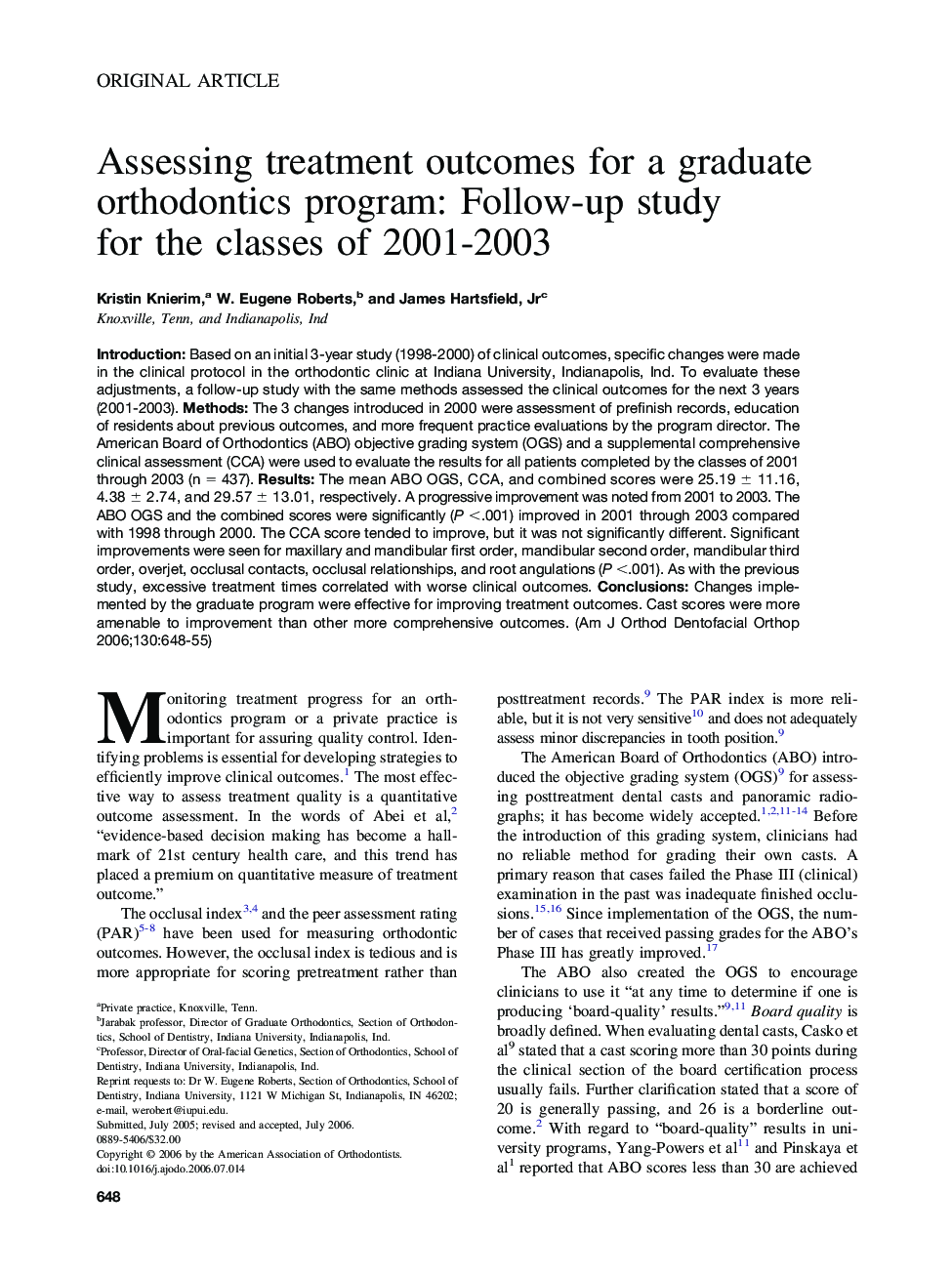| Article ID | Journal | Published Year | Pages | File Type |
|---|---|---|---|---|
| 3119887 | American Journal of Orthodontics and Dentofacial Orthopedics | 2006 | 11 Pages |
Abstract
Introduction: Based on an initial 3-year study (1998-2000) of clinical outcomes, specific changes were made in the clinical protocol in the orthodontic clinic at Indiana University, Indianapolis, Ind. To evaluate these adjustments, a follow-up study with the same methods assessed the clinical outcomes for the next 3 years (2001-2003). Methods: The 3 changes introduced in 2000 were assessment of prefinish records, education of residents about previous outcomes, and more frequent practice evaluations by the program director. The American Board of Orthodontics (ABO) objective grading system (OGS) and a supplemental comprehensive clinical assessment (CCA) were used to evaluate the results for all patients completed by the classes of 2001 through 2003 (n = 437). Results: The mean ABO OGS, CCA, and combined scores were 25.19 ± 11.16, 4.38â± 2.74, and 29.57 ± 13.01, respectively. A progressive improvement was noted from 2001 to 2003. The ABO OGS and the combined scores were significantly (P <.001) improved in 2001 through 2003 compared with 1998 through 2000. The CCA score tended to improve, but it was not significantly different. Significant improvements were seen for maxillary and mandibular first order, mandibular second order, mandibular third order, overjet, occlusal contacts, occlusal relationships, and root angulations (P <.001). As with the previous study, excessive treatment times correlated with worse clinical outcomes. Conclusions: Changes implemented by the graduate program were effective for improving treatment outcomes. Cast scores were more amenable to improvement than other more comprehensive outcomes.
Related Topics
Health Sciences
Medicine and Dentistry
Dentistry, Oral Surgery and Medicine
Authors
Kristin Knierim, W. Eugene Roberts, James Jr,
